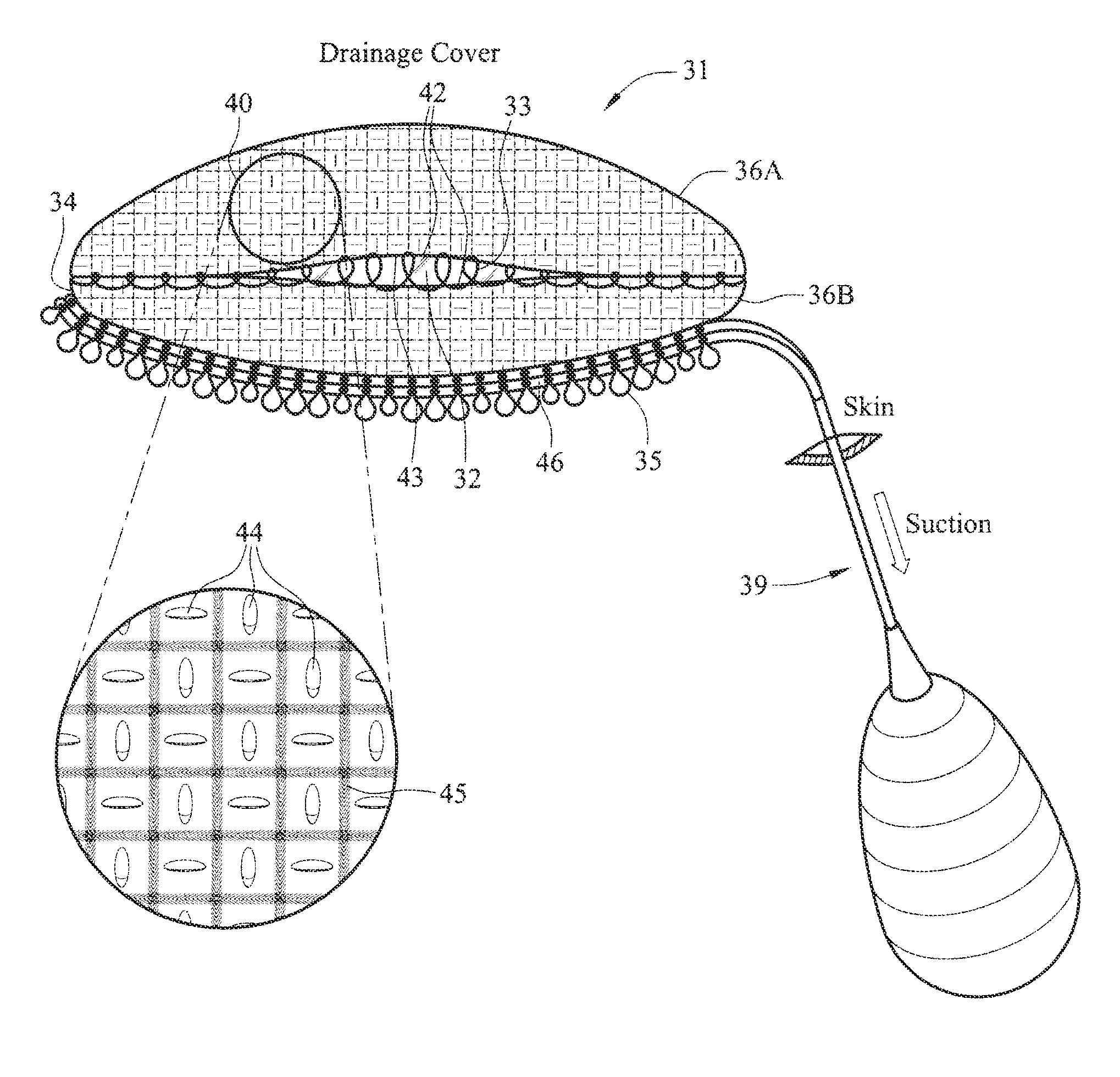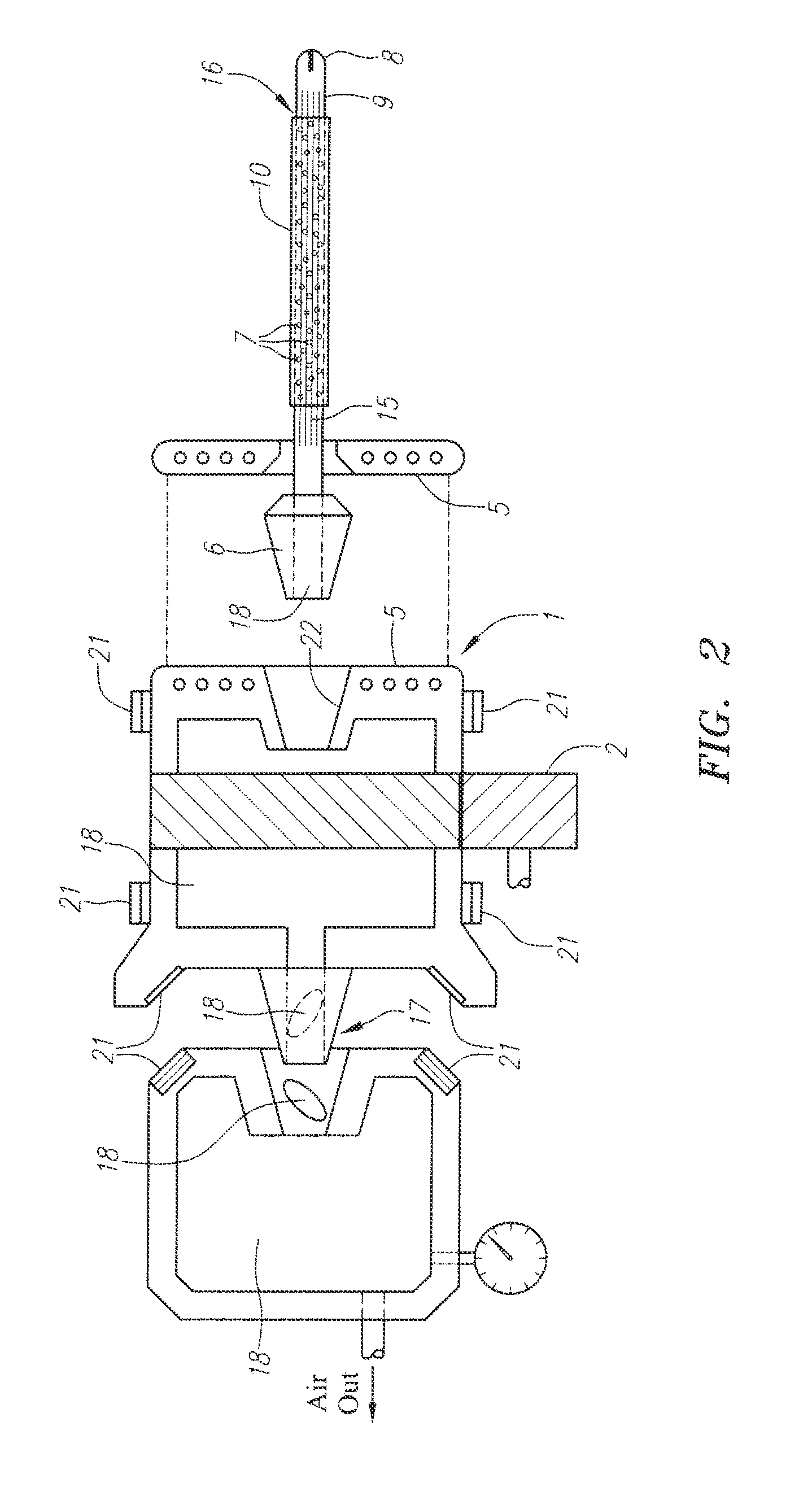IMPLANTABLE MICRO-TEXTURED SCAR INDUCING ePTFE STRUCTURES
a micro-textured, scar-inducing technology, applied in the direction of prosthesis, blood vessels, catheters, etc., to achieve the effect of reducing or eliminating shear motion
- Summary
- Abstract
- Description
- Claims
- Application Information
AI Technical Summary
Benefits of technology
Problems solved by technology
Method used
Image
Examples
Embodiment Construction
[0039]Referring to FIGS. 1 and 2, the hollow spindle / mandrel assembly 1 is mounted on a lathe which has a computer-controlled variable speed drive 2 and including “forward and reverse”. Programmable rotating and reciprocating motions of the lathe advance the spindle / mandrel assembly 1 into position with respect to the compound motion “RIGDA Tool Assembly”3, which is made to transition along three axes 4 independently. All feed motions are made programmable on the machine. A vacuum source is fitted to the machine. It should be noted that FIGS. 1 and 2 are concept drawings and thus are semi-schematic. As would be appreciated by a person skilled in the art, actual manufacturing drawings very likely would appear different.
[0040]The spindle-mandrel 1 is comprised of a solid high grade stainless steel tank, other structural materials, an adaptive coupling consisting of an integrated hollow conical electromagnetically actuated, and keyed socket chuck 5 which receives the standard precision...
PUM
| Property | Measurement | Unit |
|---|---|---|
| depth | aaaaa | aaaaa |
| thickness | aaaaa | aaaaa |
| thickness | aaaaa | aaaaa |
Abstract
Description
Claims
Application Information
 Login to View More
Login to View More - R&D
- Intellectual Property
- Life Sciences
- Materials
- Tech Scout
- Unparalleled Data Quality
- Higher Quality Content
- 60% Fewer Hallucinations
Browse by: Latest US Patents, China's latest patents, Technical Efficacy Thesaurus, Application Domain, Technology Topic, Popular Technical Reports.
© 2025 PatSnap. All rights reserved.Legal|Privacy policy|Modern Slavery Act Transparency Statement|Sitemap|About US| Contact US: help@patsnap.com



